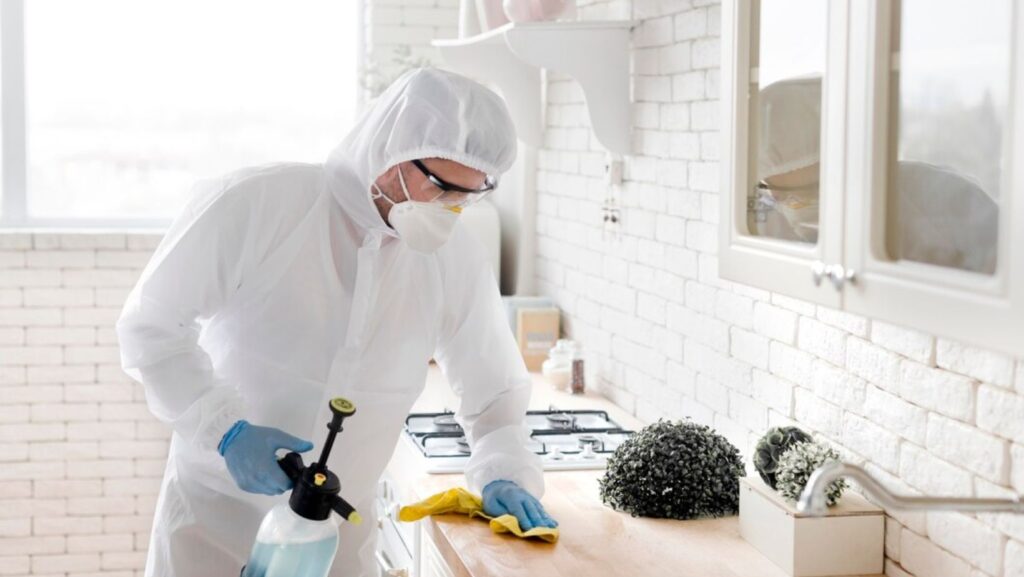Biohazard homes present unique challenges when it comes to cleaning. Reasons for having a biohazard in the home can vary, but these homes often contain biological materials that can pose a significant health risk to occupants and visitors. Certified blood spill cleanup experts play a crucial role in ensuring that such materials are handled properly. Therefore, safely and effectively cleaning a biohazard home is of utmost importance. This article delves into some effective methods for biohazard home cleanse to aid individuals faced with the outcome of a biohazard situation.
Contents
Table of Contents
ToggleWhat is a Biohazard Home?
A biohazard home is a property that has been contaminated by biological materials such as blood, bodily fluids, feces, and other potentially harmful substances that can cause health problems if not properly handled. These contaminations often occur due to incidents like violent crime, deaths, animal infestations, or hoarding.
Why Cleaning a Biohazard Home is Necessary?
The aid of professional biohazard cleanup teams is often sought due to the severe health risks associated with biological contamination. Exposure to biohazards may lead to infections, diseases, and potentially life-threatening conditions like HIV, Hepatitis B, and C. That’s why cleaning a biohazard home is not just meticulous, but a necessary task.
Effective Ways to Clean a Biohazard Home
As daunting and dangerous as the task may seem, there are effective methods to help safely clean a biohazard home:
1. Professional Biohazard Cleaning Services
Given the complexity and nature of the cleaning needs of biohazard homes, it is highly recommended to enlist the service of professional cleaning companies who specialize in biohazard home cleansing. They possess the necessary training, experience, and equipment to carry out the cleaning process safely and comprehensively.
2. Proper Personal Protective Equipment (PPE)
Regardless of whether one is a skilled professional or an individual handling the cleaning process, the usage of proper Personal Protective Equipment is crucial. This may include gloves, masks, goggles, and fully-encapsulated suits to prevent exposure to harmful substances.
3. Use EPA-approved Cleaning Agents
For home biohazard cleanups, it’s imperative to use strong, EPA-approved disinfectants to kill bacteria and other harmful pathogens.
Cleaning for appearance’ simply isn’t enough – biological contaminants are often invisible to the naked eye.
4. Proper Disposal of Biohazard Waste
Spill kits from Storemasta can help to clean and store chemicals safely until it’s possible to get dispose of them correctly. Any material contaminated with hazardous substances must be handled carefully and disposed of properly, typically in specially designated biohazard waste bags. This isn’t normal rubbish – it needs to be segregated and disposed of following specific health and safety regulations.
5. Know When to Call for Professional Help
If you’re dealing with significant biohazardous materials and just want the most effective ways for biohazard home cleanse, consider bringing in trained professionals with the skills required to decontaminate your home and turn it back into a safe living space.
Detailed Steps in Biohazard Cleanup
1. Initial Assessment and Planning
Before diving into the cleanup process, an initial assessment is crucial. This involves identifying the extent of the contamination, understanding the types of biohazards present, and planning the necessary steps for cleanup. Professional biohazard cleaners often start with a thorough inspection to create a tailored cleanup plan.
2. Containment and Ventilation
To prevent the spread of contaminants to other areas of the house, the affected area should be contained. This may include sealing the area with plastic sheeting and creating negative air pressure with air filtration devices. Proper ventilation is also essential to remove airborne contaminants and maintain a safe working environment.
3. Removal of Contaminated Materials
Once the area is contained, the next step involves the removal of contaminated materials. This can include anything from furniture and carpets to personal belongings that have been exposed to biohazards. Items that cannot be adequately cleaned and disinfected should be disposed of following biohazard waste disposal regulations.
4. Cleaning and Disinfection
The actual cleaning process involves multiple steps. First, gross contamination is removed, which includes visible blood, bodily fluids, and other biological materials. Following this, the area is cleaned using EPA-approved disinfectants to eliminate pathogens. High-touch surfaces and hard-to-reach areas must be meticulously cleaned to ensure no traces of biohazards remain.
5. Deodorization
After cleaning and disinfection, deodorization is often necessary to remove any lingering odors. This can be achieved using industrial-grade deodorizers and equipment such as ozone machines or hydroxyl generators. Deodorization not only improves the living conditions but also helps in psychologically restoring the space for occupants.
6. Verification and Testing
To ensure the area is safe for reoccupation, verification and testing are crucial. This involves using specialized equipment to detect any remaining contaminants. Professional biohazard cleaners might conduct swab tests and use ATP meters to measure the level of cleanliness. Only after these tests confirm the area is safe should the containment barriers be removed.
7. Final Inspection and Clearance
A final inspection ensures all steps have been thoroughly completed and that the home is safe for living. Professional services often provide a clearance certificate, which is especially important if the property is being sold or rented.



